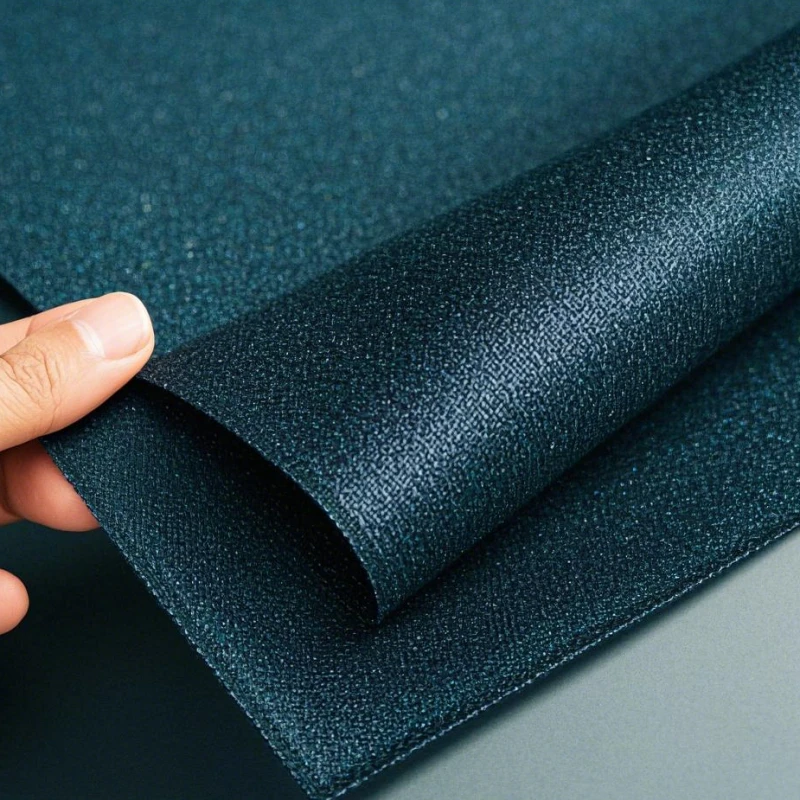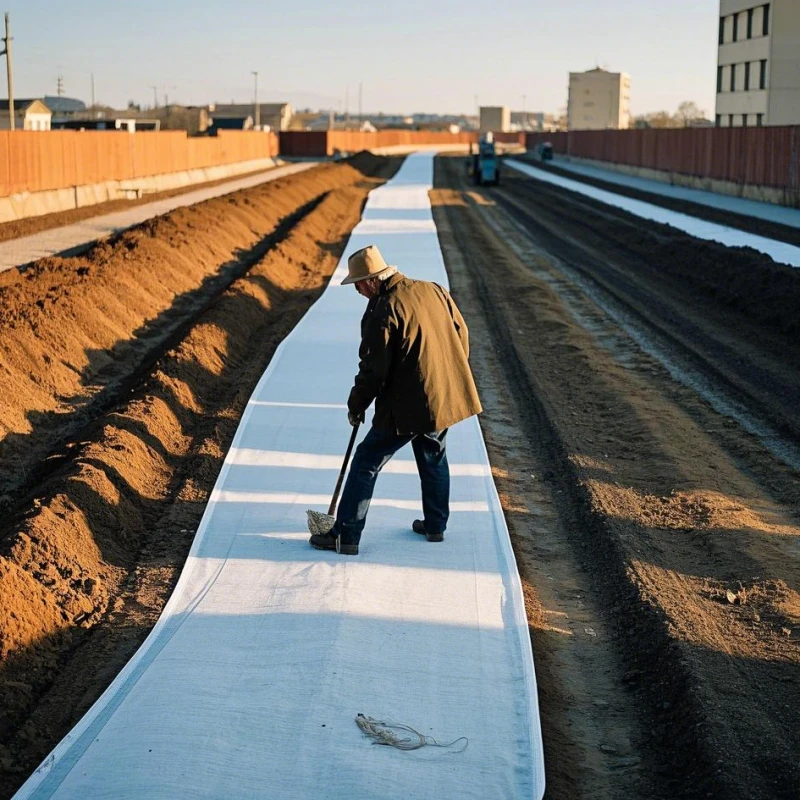Non-Woven Geotextile Fabric for Driveway: The Essential Guide for a Durable and Sustainable Surface
When it comes to building a durable driveway, selecting the right materials is crucial for both the short-term performance and long-term durability. One such material that has gained popularity in recent years is non-woven geotextile fabric. Used in driveway construction, non-woven geotextiles offer superior strength, drainage, and reinforcement to the surface layer, ensuring that the driveway withstands the test of time. This article explores the role of non-woven geotextile fabric in driveway construction, providing in-depth information, relevant research data, and practical guidance on how to use it effectively.
What is Non-Woven Geotextile Fabric?
Non-woven geotextile fabric is made from synthetic fibers that are bonded together through heat, chemicals, or mechanical processes. Unlike woven fabrics, non-woven geotextiles do not have a tight weave but instead feature a randomly oriented fiber structure. This unique composition results in a fabric that is porous, flexible, and capable of providing excellent filtration and drainage properties.
For driveways, non-woven geotextiles are typically placed beneath the surface layer of gravel, stone, or asphalt. They serve multiple purposes, including separation, filtration, reinforcement, and drainage.
Key Benefits of Using Non-Woven Geotextile Fabric for Driveways
1. Improved Drainage
One of the primary advantages of non-woven geotextile fabric is its ability to enhance drainage. The fabric's structure allows water to pass through easily, preventing the buildup of moisture underneath the driveway surface. By reducing water accumulation, non-woven geotextiles help to avoid erosion and ensure that the driveway remains stable.
2. Separation and Reinforcement
Geotextiles help to separate different materials in the driveway, such as the base layer of gravel or stone and the soil beneath. This separation prevents the mixing of materials, which could lead to uneven settling or sinking of the driveway. The fabric also adds reinforcement, providing added strength to the surface and reducing the risk of cracking or shifting.
3. Longevity and Durability
Non-woven geotextiles are designed to withstand harsh environmental conditions. Their ability to resist UV rays, temperature fluctuations, and mechanical stress means they contribute to the overall longevity and durability of the driveway.
4. Cost-Effective Solution
Incorporating non-woven geotextile fabric can reduce the amount of gravel or stone needed for the base layer of a driveway. This not only saves on material costs but also reduces the need for future maintenance and repairs.

In the construction of driveways, non-woven geotextiles have many functions. They can isolate materials of different particle sizes, prevent material mixing, and maintain structural stability; they can also enhance the bearing capacity of the foundation and disperse the load generated by vehicle driving; they can also effectively prevent the displacement and deformation of the foundation soil and extend the service life of the driveway.
Research and Data on Non-Woven Geotextiles
To further understand the effectiveness of non-woven geotextiles in driveway construction, let’s look at some research data and comparisons of key performance indicators.
Performance of Non-Woven Geotextiles in Driveway Applications
Table 1 below shows the comparison of key properties of non-woven geotextiles commonly used for driveways:
| Property | Non-Woven Geotextile | Performance Criteria |
|---|---|---|
| Tensile Strength | 20-40 kN/m | Ensures the fabric can withstand the stresses of traffic and weather conditions. |
| Water Permeability | 50-150 cm/sec | Facilitates effective water drainage, reducing moisture buildup. |
| UV Resistance | High (up to 80% retention after 5000 hours of exposure) | Protects against UV degradation, extending the lifespan of the driveway. |
| Thickness | 2-6 mm | Provides an optimal balance between strength and flexibility. |
| Puncture Resistance | 300-500 N | Prevents damage from sharp objects or heavy vehicles. |
These data points highlight how non-woven geotextile fabrics excel in terms of durability, water permeability, and strength, all of which are essential factors in the construction of a reliable and long-lasting driveway.
How Non-Woven Geotextiles Work in Driveway Construction
Step 1: Preparation of the Subgrade
The first step in constructing a durable driveway is preparing the subgrade. The soil must be compacted to provide a stable foundation for the driveway surface. In areas with weak or unstable soil, non-woven geotextiles are especially beneficial, as they provide separation between the soil and the gravel base.
Step 2: Installing the Geotextile Fabric
Once the subgrade is prepared, the non-woven geotextile fabric is unrolled across the area. The fabric should be laid out smoothly without wrinkles or overlaps. In cases where seams are necessary, they should be overlapped by at least 12 inches (30 cm) to ensure proper functionality.
Step 3: Adding the Base Layer
After the geotextile is in place, a layer of gravel or crushed stone is added on top. The geotextile fabric prevents the base material from mixing with the soil beneath, creating a stable and supportive surface. This also reduces the risk of rutting and sinking over time.
Step 4: Surface Layer Application
Finally, the top layer of the driveway, whether asphalt, concrete, or additional gravel, is added. The combination of the geotextile fabric and base layer provides a strong and durable foundation for the surface layer, ensuring the entire structure remains stable for years to come.
Data on Longevity and Performance
Table 2 provides an overview of the estimated lifespan of different types of driveways with and without the use of non-woven geotextile fabric.
| Driveway Type | Without Geotextile | With Geotextile |
|---|---|---|
| Gravel Driveway | 5-10 years | 15-20 years |
| Asphalt Driveway | 10-15 years | 20-30 years |
| Concrete Driveway | 15-25 years | 30-40 years |
As seen in Table 2, non-woven geotextiles significantly extend the lifespan of driveway surfaces, reducing the need for costly repairs and replacements over time.
How to Choose the Right Non-Woven Geotextile for Your Driveway
Selecting the right non-woven geotextile fabric is crucial to the success of your driveway project. Here are some factors to consider:
1. Fabric Strength
The tensile strength of the fabric is essential to ensure it can withstand the weight of vehicles and environmental conditions. For driveways, a tensile strength of 20-40 kN/m is ideal.
2. Water Permeability
Look for geotextiles with high water permeability (50-150 cm/sec) to allow proper drainage and prevent water-related damage to the surface.
3. UV Resistance
UV-resistant fabrics are important for driveways exposed to sunlight, as they prevent degradation and ensure long-term durability.
4. Thickness
Choose a fabric thickness between 2-6 mm, which provides a good balance between strength, flexibility, and ease of installation.
Conclusion
Non-woven geotextile fabric is a cost-effective, durable, and practical solution for building long-lasting driveways. By improving drainage, providing separation, reinforcing the base layer, and extending the lifespan of the surface, non-woven geotextiles play a pivotal role in the success of your driveway construction. Whether you're building a gravel, asphalt, or concrete driveway, incorporating this fabric into the design will lead to significant long-term benefits.
For high-quality geosynthetic materials and comprehensive environmental engineering solutions, Haoyang Environmental Co., Ltd. is your trusted partner. Established in 2008, Haoyang specializes in the research, development, and manufacture of geosynthetics, including non-woven geotextiles. With certifications such as ISO 9001 and ISO 14001, as well as a professional R&D team, Haoyang delivers advanced materials and expertise to ensure the success of your construction projects. Visit our website to explore our range of products and services today.

897.webp)
942.webp)
237.webp)